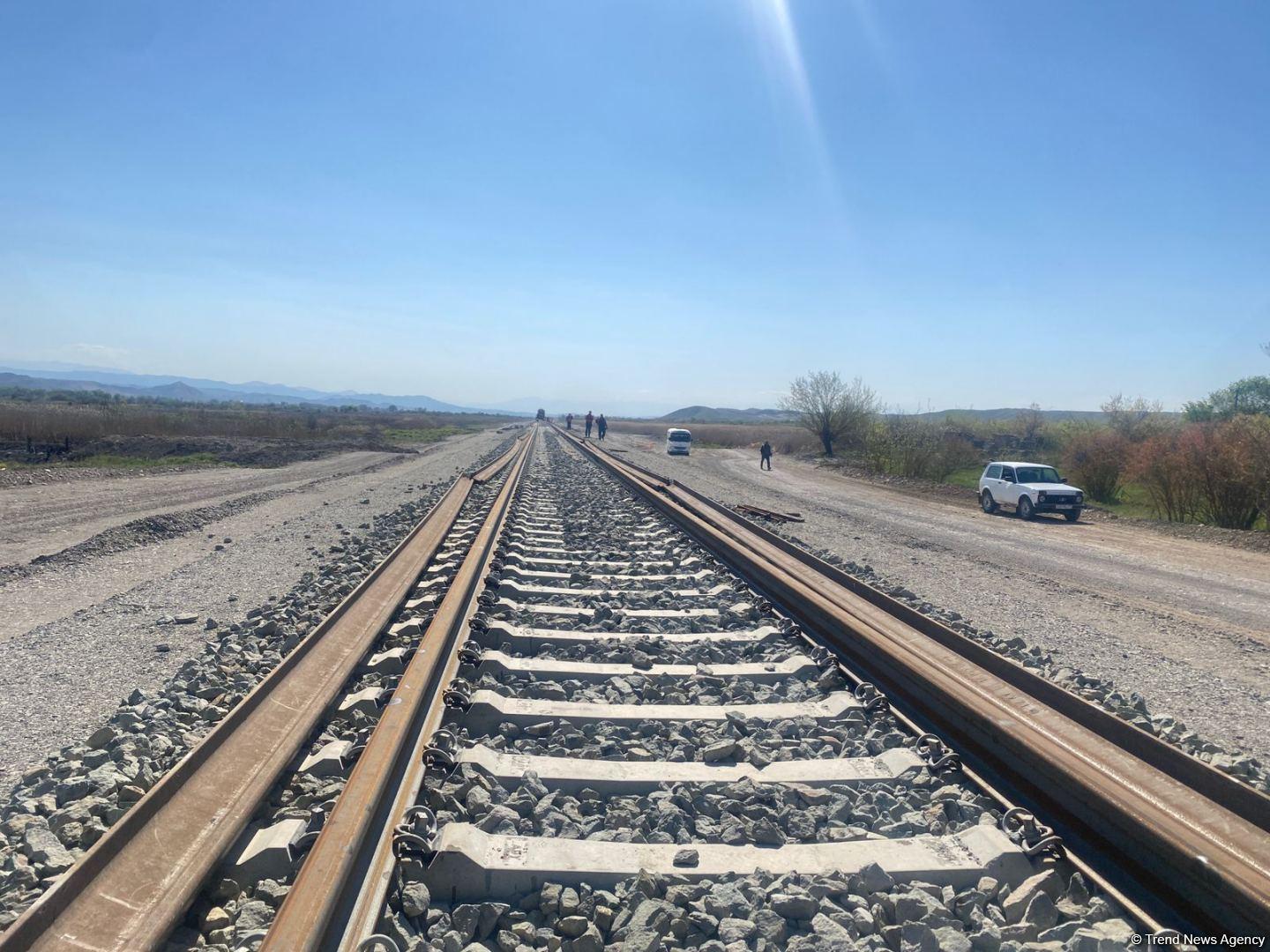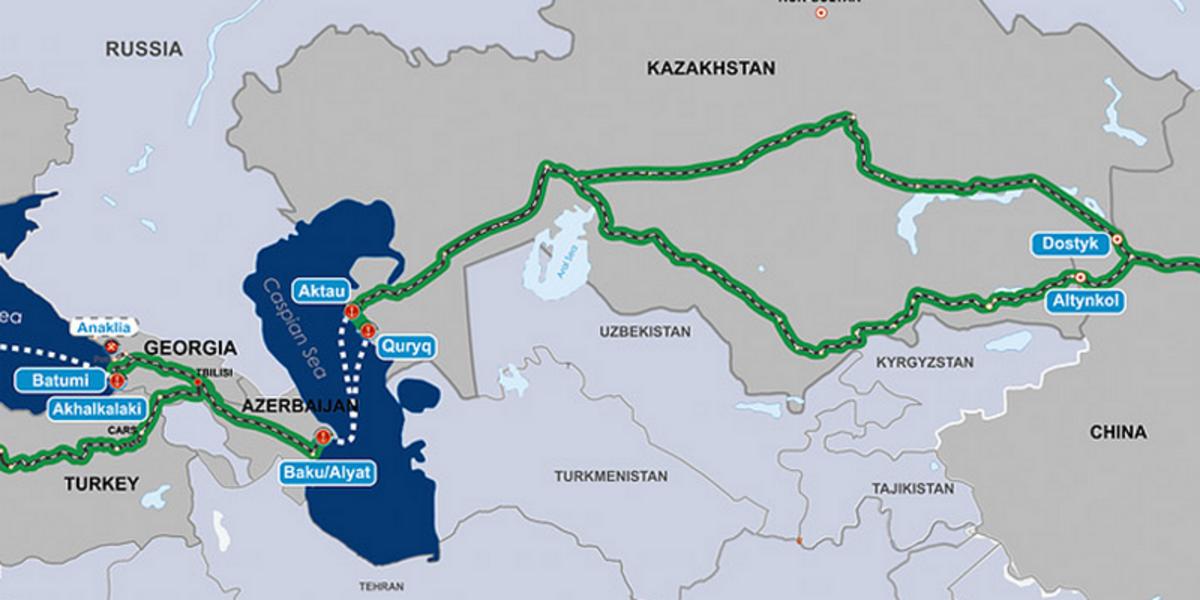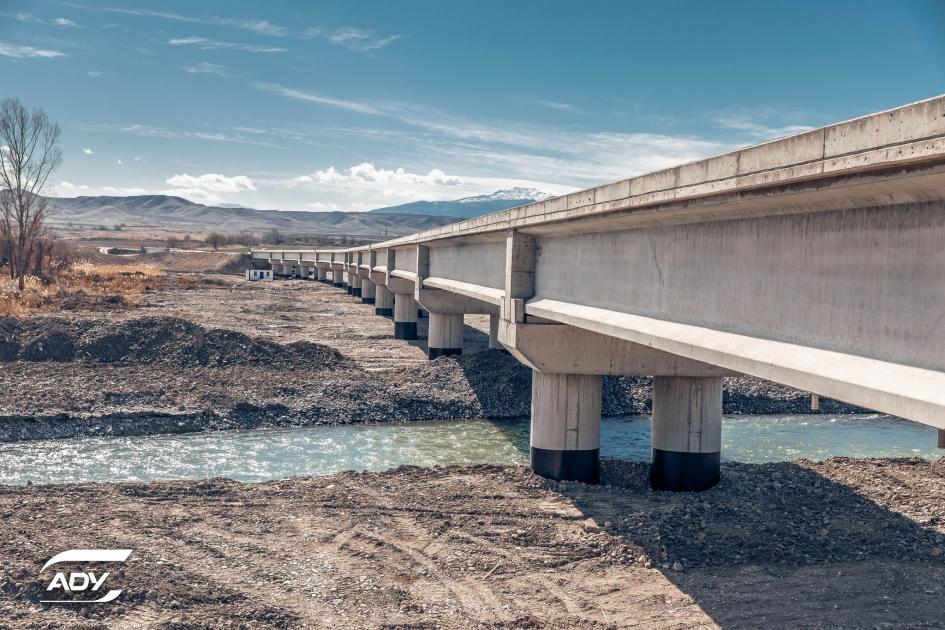Azerbaijan's new railway line to enhance global trade, regional development Game-changer in logistics
For four years, Azerbaijan has been pursuing an extensive program to rejuvenate the Karabakh and East Zangazur economic regions, which were liberated from occupation. Efforts are focused on rebuilding towns and villages destroyed by Armenians and on constructing new housing, social, and industrial facilities.
The region's significant agro-industrial, export, and transit potential is being harnessed through the enhancement of its transport and logistics infrastructure. Modern motorways, airports, and railway lines have been established, with particular emphasis on the development of rail networks. Recently, Azerbaijan Railways CJSC (ADY) has provided updates on the progress of the strategically crucial Horadiz-Aghband railway project.

Today, nations across the Caspian region, along with Europe, Türkiye, and China, are eager to collaborate with Azerbaijan in the transport and logistics sector, recognizing the country's pivotal role as a regional transport hub.
Azerbaijan stands at the crossroads of several key initiatives of the Great Silk Road, including the EU's Europe-Caucasus-Asia (TRACECA) route, China's Belt and Road Initiative, the Lapis Lazuli project in collaboration with Turkmenistan, and the Trans-Caspian International Transport Route (TITR). The latter frequently incorporates trans-shipment via the recently upgraded Baku-Tbilisi-Kars (BTK) railway line.
In light of recent geopolitical shifts in Eurasia, there has been a growing demand for railway trans-shipment through Azerbaijan. Consequently, the partner countries are actively pursuing various initiatives to enhance transit traffic along the Middle Corridor.
Given the rapid increase in cargo trans-shipment volumes along the East-West route and in the opposite direction, the current capacity of the TITR route and the BTK corridor may soon be inadequate. Last year, cargo traffic along the Middle Corridor surged by 65 per cent, approaching 3 million tons, with Kazakh experts projecting a rise to 4.2 million tons in 2024.
Similarly, the North-South project, which aims to handle comparable volumes, is set to expand, particularly with increased Russian-Iranian cargo transit plans. Consequently, Azerbaijan's railway infrastructure will face growing demands for additional capacity. Following the successful conclusion of the 44-day Patriotic War, Azerbaijan has embarked on expanding its transport and logistics network by initiating the construction of new railway lines in the East-Zangazur and Karabakh economic regions.
The focus is on developing the international Horadiz-Aghband railway line, a crucial transboundary project. Over the past three years, approximately 57 per cent of the 110.4-kilometer single-track segment, which traverses the Jabrayil and Zangilan districts to the border village of Aghband, has been completed. This project involves the construction of three tunnels, numerous bridges, nine railway stations, and nearly 500 engineering structures.
ADY's Deputy Director of Construction Project Management Department, Kanan Rzayev, recently reported that the design phase for the Horadiz-Aghband railway line is 83 per cent complete. Demining operations have been finished within a 60-meter-wide area along the railway's reinforcement strip and its protection zone. Construction and installation are being carried out in three stages and are expected to be finished by 2025.
Rzayev noted that rail-tie frames have been installed on a 72-kilometer section of the railway line and an 83.4-kilometer section with side tracks with long rails fully installed on a 65.6-kilometer stretch. Currently, excavation and the construction of engineering structures are ongoing on the 72-89 kilometer segment of the line.

Turkish contractors are spearheading the construction of the Horadiz-Aghband railway, which is being built through challenging mountainous terrain with the aid of advanced technologies. Notably, a 1,071-meter tunnel has been completed at the 106th kilometer of the railway, utilizing a novel Austrian technique. This method allows the tunnel design to adapt to the load-bearing capacity of the rocky ground, thus optimizing construction costs. The tunnel’s dimensions are sufficient to support future electrification of the railway line.
Additionally, a railway gallery currently under construction at the 75th kilometer is also designed to accommodate future electrification. This 144-meter gallery, the first of its kind since the Republic’s independence, will shield the railway from rock fragments in the event of avalanches or rockfalls.
Due to the proximity of the Horadiz-Aghband railway section at the 79th kilometer to the Khudafarin reservoir, a 771-meter bridge with 23 spans is under construction. Its supports are being constructed from monolithic reinforced concrete bored piles with a diameter of 1,200 mm. While the reinforced concrete work for this bridge is completed, insulation work on the movable sump is scheduled to begin. Additionally, a 418-meter bridge over the rugged Hakari River, also part of the project, represents a significant engineering challenge.
The Horadiz-Aghband railway project is a major, but not solitary, initiative within the broader development of railway infrastructure in the Karabakh region. The project aligns with the anticipated production potential of the Aghdam-Khojaly agglomeration, and efforts are being accelerated to develop railway infrastructure that will facilitate future freight traffic both regionally and internationally.
Under the presidential Order dated November 24, 2020, a 47.1-kilometer railway line is being constructed from Barda to Aghdam. By mid-May this year, 92.5 per cent of the work has been completed, including the construction of four stations—Barda, Kocharli, Tazakand, and Aghdam—three bridges, and 130 other engineering and track structures.
The Barda-Aghdam line will support trains traveling at speeds of up to 80 km/h, with an estimated annual freight turnover of 1.5 million tons. The railway will be extended to include the Aghdam-Khojaly-Khankandi line, for which design and estimation work is currently in progress.
Significant attention is paid to environmental protection in the construction of new railway lines in the Karabakh region. For example, a forest belt has been established at the 85th kilometer of the Horadiz-Aghband branch line, near Minjivan station, with several trees replanted. Similarly, the Barda-Aghdam project features the planting of Eldar pines and cypresses, along with the implementation of modern, efficient irrigation systems for green areas.

Upon the completion of the 110.4-kilometer Horadiz-Aghband line next year, Azerbaijan will enhance international Middle Corridor with an additional branch line. Moreover, the restoration of railway connections within Karabakh is expected to play a crucial role in the socio-economic revitalization of the territories liberated from occupation.
Fayaz Rustamov, head of the AYD department, emphasized the strategic significance of the Horadiz-Aghband railway project for both international communication and domestic logistics. He explained that optimizing domestic logistics will facilitate the swift and dependable delivery of local products to global markets, thereby benefiting the national economy.
Additionally, the project will bolster Azerbaijan's role as a key transit route between Europe and Asia. Notably, the new railway will provide direct and reliable logistical connections between Azerbaijan and its exclave, the Nakhchivan Autonomous Republic.








